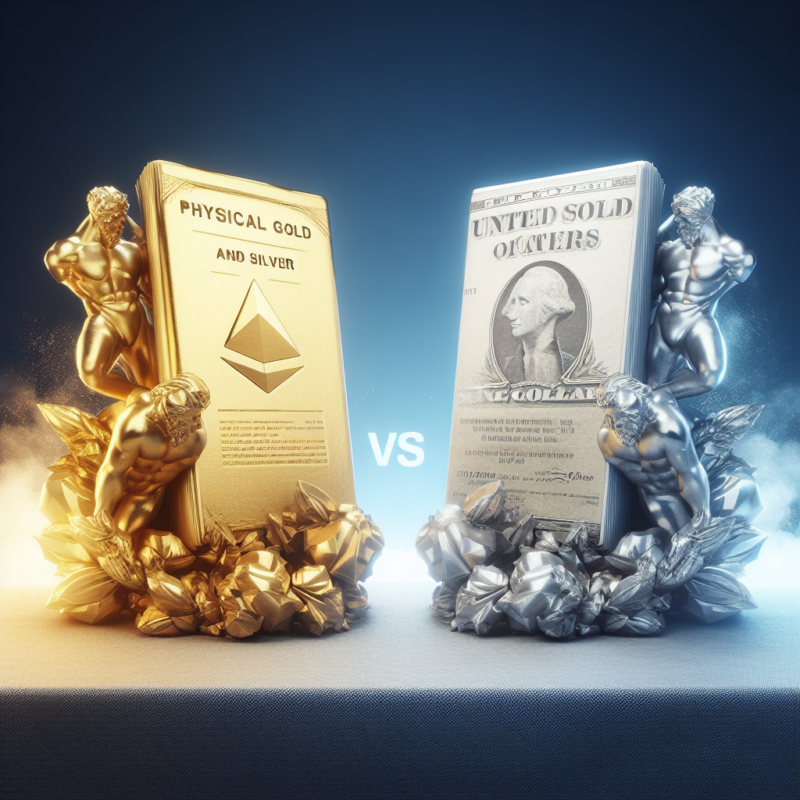Introduction
When it comes to investing in precious metals, two options stand out: physical gold and silver, and paper gold and silver. Both offer unique advantages and disadvantages, making it essential to understand the differences between the two before making your investment decision. In this article, we will explore the characteristics of physical gold and silver and paper gold and silver, helping you determine which type of investment is right for you.
Physical Gold and Silver: Tangible Wealth
Physical gold and silver refer to the actual metal in the form of coins, bars, or jewelry. These tangible assets have been valued for centuries and are often seen as a safe haven during times of economic uncertainty. Here are some advantages and disadvantages of investing in physical gold and silver:
Advantages of Physical Gold and Silver
- Tangible Asset: Owning physical gold and silver provides you with a sense of security as you can physically hold and store them.
- Protection against Inflation: Precious metals have historically acted as a hedge against inflation, preserving purchasing power.
- No Counterparty Risk: Unlike paper gold and silver, physical metals do not rely on the performance or stability of financial institutions.
- Privacy: Physical gold and silver transactions offer greater privacy compared to paper investments, which may require disclosure.
Disadvantages of Physical Gold and Silver
- Storage and Security: Physical metals require secure storage, which may incur additional costs and considerations.
- Liquidity: Selling physical gold and silver can take time and effort compared to paper investments that can be easily traded.
- Higher Premiums: Physical metals often come with higher premiums due to production costs, making the initial investment slightly more expensive.
Paper Gold and Silver: Convenience and Flexibility
Paper gold and silver, on the other hand, represent ownership of gold and silver without physically possessing the metal. These investments can take various forms, such as exchange-traded funds (ETFs), or mining company stocks. Let’s explore the advantages and disadvantages of paper gold and silver:
Advantages of Paper Gold and Silver
- Liquidity: Paper investments in gold and silver can be easily bought and sold on financial markets, providing greater liquidity.
- Lower Costs: Compared to physical metals, paper investments typically have lower transaction costs and no storage fees.
- Diversification: Paper gold and silver allow investors to gain exposure to the precious metals market without the need for large capital outlays.
- Flexibility: Investors can choose from a wide range of paper gold and silver products, tailoring their investment strategy to their specific needs.
Disadvantages of Paper Gold and Silver
- Counterparty Risk: Paper investments rely on the financial institution’s ability to deliver the underlying assets, exposing investors to counterparty risk.
- Market Volatility: Paper gold and silver prices can be influenced by market speculation and other external factors, leading to increased volatility.
- Opaque Ownership: Unlike physical metals, paper investments may not provide direct ownership of the underlying gold and silver, raising concerns about transparency.
Conclusion
Deciding between physical gold and silver and paper gold and silver ultimately depends on your investment goals, risk tolerance, and personal preferences. Physical metals offer tangible security and protection against inflation but come with storage considerations. On the other hand, paper investments provide convenience, liquidity, and diversification but carry counterparty risk and lack the physical ownership aspect. Consider consulting with a financial advisor to determine the best approach for your unique circumstances. Remember, both types of investments can play a valuable role in a well-diversified portfolio.

